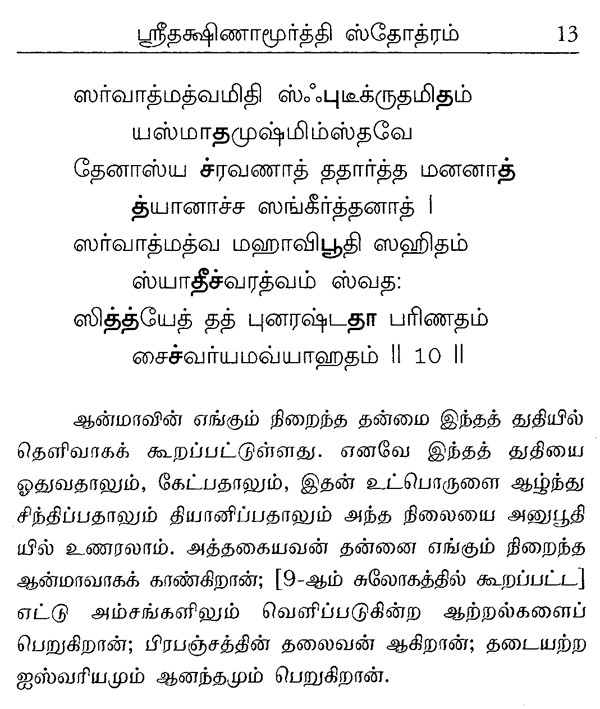
Brahmanishta refers to the Guru being a Self-realized person, who is ever established in Brahman. Srotriya refers to having a thorough knowledge of the Vedas, including its deeper symbolism and significance. The verse further describes the qualities of a Guru, who is able to impart Brahma-Jnana as being two-fold: Srotriya and Brahmanishta. Thus, the Mundaka Upanishad (1.2.12) says that one, who has developed Vairagyam (dispassion) towards the mundane objects after thoroughly examining the futility of pursuing them, and who, now, wishes to attain ‘Tattva Jnana’- the knowledge of ultimate transcendental reality, should go and take refuge in a “Guru”. mental passions like lust, anger, hate, delusion, jealousy, etc., which are rooted in ignorance and ‘Ru’ as the annihilator of these mental passions. Similar verses are found in Guru Gita (1.45) as well, which defines ‘Gu’ as “Bhava roga”- material diseases, i.e. The letter ‘gu’ refers to darkness, the letter ‘ru’ means he who dispels such darkness, ‘Guru’ is called so because of his ability to dispel darkness (of ignorance). The Advayataraka Upanishad (Verse 16) says: This specific role played by the Guru is manifest in the very name itself.
#Dakshinamurthy stotram english transliteration pdf free#
Instead, Guru is one, who imparts Adhyatmika Vidya- the spiritual wisdom and facilitates a person to attain Bramha-Jnana and hence become free from ignorance (Avidya), which causes the bondage of birth and death. Thus, in the Hindu tradition, Guru is not simply any teacher, who imparts some mundane knowledge. In verse 2.146, it is further states that such a Guru, who initiated a child into Veda and hence in the path towards Brahma-Jnana, is more venerable than the father, who has merely given physical birth to a child. who imparts Brahma-Jnana (Knowledge of Brahman, which ultimately leads to Moksha/liberation) to the child, as being both the father and the mother of that child. Manu Smriti (2.144) describes such a Guru, who truthfully fills both the ears of the child with the Vedas, i.e. In other words, Guru is an Acharya, who in addition to imparting knowledge of the Vedas, also plays the role of a parent. That is, Guru is one, who takes up parental duties like performing various Samskaras and providing food and shelter to the pupil, apart from imparting the knowledge of Vedas and guiding the pupil on the path to liberation. Guru is one, who does various sacraments to the child, starting from Nisheka to Upanayana, and also feeds him with food.

In the modern settings, he can be compared to preceptor, who acts as a teacher and a guide.

Acharya is one, who performs the sacrament of Upanayana (and initiates him into Gayatri mantra), and teaches the Vedas and the allied subjects, the entirety of the Vedic corpus along with its practical application and the deeper symbolic meaning. It is similar to modern vocational teaching, wherein teachers use teaching as a means of livelihood. Upadhyaya is one, who teaches any one branch of the Vedic corpus as a means of livelihood.


Manu Smriti (2.140-142) explains three kinds of teachers, in the context of spiritual education: Upadhyaya, Acharya, and Guru. Though, the term Guru is often translated simply as a “teacher”, the English word does not completely convey the meaning of Guru. The importance of Guru in an individual’s life can also be gauged by the fact that the Guru is considered as the father of a child, who has undergone the Upanayana ceremony and has thus taken a “second birth”, whereas the Vedas taught by the Guru becomes the Mother of such a person. The phrase is actually taken from the Taittiriya Upanishad (Shikshavalli XI.2), which is one of the foremost of the Upanishads. The saying “ matrudevo bhava, pitrudevo bhava, acharyadevo bhava” equating mother, father, and the teacher with Ishwara (Brahman) is a well-known and deeply ingrained wisdom in Hindu tradition. Salutation to Dakshinamurthy, who is all pervading like the space/ether, and who is manifest in different forms as Ishwara (God), Guru (teacher), and as Atman (the Self).


 0 kommentar(er)
0 kommentar(er)
